
USER MANUAL
BEHIND-THE-EAR
HEARING SYSTEMS
XS G4
DUO G4
P G4

2
CONTENT
Welcome 4
Your hearing instruments 5
Instrument type 5
Getting to know your hearing instruments 5
Components and names 6
Controls 10
Settings 12
Batteries 14
Battery size and handling tips 14
Replacing batteries 14
Recharging rechargeable batteries 16
Daily use 17
Turning on and o 17
Inserting and removing the hearing instruments 18
Adjusting the volume 21
Changing the hearing program 22
Further adjustments (optional) 22
Special listening situations 23
Varying AudioSpot
(optional, depending on model) 23
On the phone 25
Audio induction loops (depending on model) 27
Audio input (FM system) (depending on model) 28

3
Maintenance and care 30
Hearing instruments 30
Ear pieces and tubes 31
Professional maintenance 34
Further information 35
Safety information 35
Wireless functionality 35
Accessories 35
Symbols used in this document 36
Troubleshooting 36
Service and warranty 38

4
WELCOME
Thank you for choosing our hearing instruments to accom-
pany you through everyday life. Like anything new, it may
take you a little time to become familiar with them.
This guide, along with support from your Hearing Care
Professional, will help you understand the advantages and
greater quality of life your hearing instruments oer.
To receive the most benet from your hearing instruments, it
is recommended that you wear them every day, all day. This
will help you get adjusted to them.
CAUTION
It is important to read this user guide and the safety
manual thoroughly and completely. Follow the safety
information to avoid damage or injury.

5
OUR HEARING INSTRUMENTS
This user guide describes optional features that your
hearing instruments may or may not have.
Ask your Hearing Care Professional to indicate the
features that are valid for your hearing instruments.
INSTRUMENT TYPE
Your hearing instruments are BTE (Behind-The-Ear) models.
A tube delivers the sound from the hearing instrument into
the ear. The instruments are not intended for children under
the age of 3 years or persons with a developmental age of
under 3 years.
GETTING TO KNOW YOUR HEARING
INSTRUMENTS
It is recommended to familiarize yourself with your new
hearing instruments. With the instruments in your hand try
using the controls and note their location on the instrument.
This will make it easier for you to feel and press the controls
while wearing the hearing instruments.
If you have problems pressing the controls of your
hearing instruments while wearing them, you can ask
your Hearing Care Professional about a remote control
option.

6
COMPONENTS AND NAMES
This user guide describes several types of hearing
instruments. Use the following pictures to identify
the type of hearing instrument that you use.
Your hearing instruments either have an earhook and a
customized ear mold, or a standard tube (Thin Tube) and a
standard ear mold (Open Tip).
XS
➎
➏
➐
➍
➎
➏
➐
➌
➋
➊
➊ Ear mold (Open Tip)
➋ Retention strand
(optional)
➌ Tube (Thin Tube)
➍ Earhook
➎ Microphone openings
➏ Rocker switch
(control)
➐ Battery compartment
(on/o switch)

7
DUO
➊
➌➍
➑
➐ ➐
➑
➏ ➏
➋
➎ ➎
➊ Ear mold (Open Tip)
➋ Retention strand
(optional)
➌ Tube (Thin Tube)
➍ Earhook
➎ Microphone openings
➏ Rocker switch
(control)
➐ Battery compartment
(on/o switch)
➑ Charging contacts

8
P
➊
➌➍
➐
➐
➏➏
➋
➎➎
➊ Ear mold (Open Tip)
➋ Retention strand
(optional)
➌ Tube (Thin Tube)
➍ Earhook
➎ Microphone openings
➏ Rocker switch
(control)
➐ Battery compartment
(on/o switch)

9
You can use standard ear pieces together with a standard
tube or custom-made ear pieces together
with an earhook and tube.
You can easily exchange the standard ear pieces and clean
the standard tube. Read more in section “Maintenance and
care”.
Standard ear pieces / tubes Size
Open Tip
Bass Tip
Thin Tube
Custom-made ear pieces
Examples:

10
CONTROLS
With the controls, you can change the volume or adjust the
hearing program, for example. The hearing systems have
either a button or a rocker switch. Your hearing system
specialist has programmed the controls with your desired
functions.
Control Left Right
Push button
Rocker switch
You can also use a remote control or a smartphone
app to control your instruments.

11
Push button function L R
Press briey:
Program change
Volume up
Volume down
Tinnitus noiser level up
Tinnitus noiser level down
Press long:
Standby/turn on
L = Left, R = Right
Rocker switch function L R
Press briey:
Program up/down
Volume up/down
Tinnitus noiser signal level up/down
Sound balance
Varying AudioSpot
Sound mixer (audio input)

12
Rocker switch function L R
Press long:
Standby/turn on
Program up/down
Press very long:
Standby/turn on
L = Left, R = Right
SETTINGS
Hearing programs
1
2
3
4
5
6
Read more in section “Changing the hearing program”.

13
Features
Power-on delay enables whistle-free insertion of
hearing instruments.
Read more in section “Turning on and o”.
AutoPhone automatically switches to the telephone
program when the telephone receiver approaches the
ear.
Read more in section “On the phone”.
2earPhone transmits the telephone call into both ears
when the telephone receiver is held to either ear.
Read more in section “On the phone”.
The tinnitus noiser feature generates a sound to
distract you from your tinnitus.
To recharge batteries in hearing instruments with
charging contacts, simply place the instruments in
the charger. After charging, the charger dehumidies
the hearing instruments.
With binaural synchronization, you can adjust both
hearing instruments simultaneously.
Read more in section “Wireless functionality”.

14
BATTERIES
When the battery is low the sound becomes weaker or you
will hear an alert signal. The battery type will determine how
long you have to replace or recharge the battery.
BATTERY SIZE AND HANDLING TIPS
Ask your Hearing Care Professional for recommended
batteries.
Battery size: 312 13
Always use the correct battery size for your hearing
instruments.
Remove the batteries if you intend not to use the hearing
instruments for several days.
Always carry spare batteries.
Remove empty batteries immediately and follow your
local recycling rules for battery disposal.
REPLACING BATTERIES
Removing the battery:
Open the battery compartment.

15
Use the magnet stick to pull out the
battery. The magnet stick is available as
an accessory.
Inserting the battery:
If the battery has a protective lm, remove it
only when you are ready to use the battery.
Insert the battery with the “+” symbol
facing up (refer to the picture).
Carefully close the battery compartment. If you feel
resistance, the battery is not inserted correctly.
Do not attempt to close the battery compartment by
force. It can be damaged.

16
RECHARGING RECHARGEABLE BATTERIES
Charge rechargeable batteries before rst use.
To charge the batteries, follow the instructions in the
charger’s user guide.
After many recharging cycles, the battery lifetime may
reduce. In this case, replace the rechargeable battery with
a new one. To do so, follow the instructions for replacing
batteries.

17
DAILY USE
TURNING ON AND OFF
You have the following options to turn your hearing
instruments on or o.
Via battery compartment:
Turning on: Close the battery compartment.
The default volume and hearing program are set.
Turning o: Open the battery compartment to the rst
catch.
With the button or rocker switch:
Turning on or o: Hold the button or rocker switch down
for a few seconds. Refer to the section “Controls“ for
control settings.
After turning on, the previously used volume and
hearing program remain set.
Via remote control:
Follow the instructions in the remote control‘s user guide.
After turning on, the previously used volume and
hearing program remain set.

18
When wearing the hearing instruments, an alert tone can
indicate when an instrument is being turned on or o.
When the power-on delay is activated, the hearing
instruments turn on after a delay of several seconds. During
this time you can insert the hearing instruments into your
ears without experiencing unpleasant feedback whistling.
The power-on delay can be activated by your Hearing Care
Professional.
INSERTING AND REMOVING THE HEARING
INSTRUMENTS
Your hearing instruments have been ne-tuned for your
right and left ear. Colored markers indicate
the side:
red marker = right ear
blue marker = left ear
Inserting a hearing instrument:
Hold the tube close to the ear piece.

19
Carefully push the ear piece into
the ear canal ➊.
Twist it slightly until it sits well.
Open and close your mouth to
avoid accumulation of air in the
ear canal.
Lift the hearing instrument and
slide it over the top of your ear ➋.
CAUTION
Risk of injury!
Insert the ear piece carefully and not too deeply
into the ear.
It may be helpful to insert the right hearing
instrument with the right hand and the left hearing
instrument with the left hand.
If you have problems inserting the ear piece,
use the other hand to gently pull your earlobe
downwards. This opens the ear canal and eases
insertion of the ear piece.

20
The optional retention strand helps to securely retain the
ear piece in your ear. To position the retention strand:
Bend the retention strand and position
it carefully into the bottom of the bowl
of your ear (refer to the picture)
Removing a hearing instrument:
Lift the hearing instrument
and slide it over the top of
your earl ➊.
Hold the tube close to the
ear piece and pull the ear piece
out carefully ➋.
Page is loading ...
Page is loading ...
Page is loading ...
Page is loading ...
Page is loading ...
Page is loading ...
Page is loading ...
Page is loading ...
Page is loading ...
Page is loading ...
Page is loading ...
Page is loading ...
Page is loading ...
Page is loading ...
Page is loading ...
Page is loading ...
Page is loading ...
Page is loading ...
Page is loading ...
Page is loading ...
-
 1
1
-
 2
2
-
 3
3
-
 4
4
-
 5
5
-
 6
6
-
 7
7
-
 8
8
-
 9
9
-
 10
10
-
 11
11
-
 12
12
-
 13
13
-
 14
14
-
 15
15
-
 16
16
-
 17
17
-
 18
18
-
 19
19
-
 20
20
-
 21
21
-
 22
22
-
 23
23
-
 24
24
-
 25
25
-
 26
26
-
 27
27
-
 28
28
-
 29
29
-
 30
30
-
 31
31
-
 32
32
-
 33
33
-
 34
34
-
 35
35
-
 36
36
-
 37
37
-
 38
38
-
 39
39
-
 40
40
AUDIOSERVICE XS 4 G4 User manual
- Type
- User manual
Ask a question and I''ll find the answer in the document
Finding information in a document is now easier with AI
Related papers
-
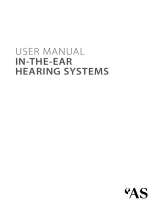 AUDIOSERVICE Icon 3 G4 User manual
AUDIOSERVICE Icon 3 G4 User manual
-
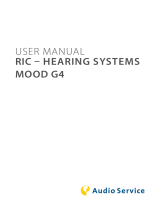 AUDIOSERVICE MOOD 16 G4 User manual
AUDIOSERVICE MOOD 16 G4 User manual
-
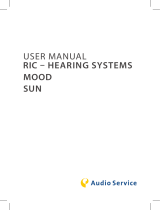 AUDIOSERVICE MOOD 16 G4 User manual
AUDIOSERVICE MOOD 16 G4 User manual
-
 AUDIOSERVICE CIC Volta C User guide
AUDIOSERVICE CIC Volta C User guide
-
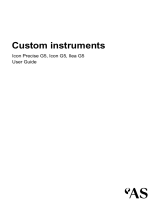 AUDIOSERVICE Icon 4 G5 Precise User guide
AUDIOSERVICE Icon 4 G5 Precise User guide
-
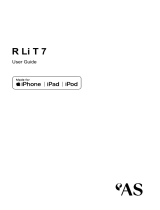 AUDIOSERVICE R Li T 7.12 User guide
AUDIOSERVICE R Li T 7.12 User guide
-
 AUDIOSERVICE VOLTA P B User manual
AUDIOSERVICE VOLTA P B User manual
-
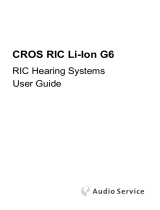 AUDIOSERVICE CROS RIC Li-Ion G6 User guide
AUDIOSERVICE CROS RIC Li-Ion G6 User guide
-
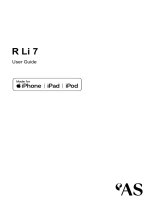 AS R Li 7.8 User manual
AS R Li 7.8 User manual
-
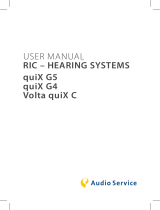 AUDIOSERVICE quiX 4 G5 User manual
AUDIOSERVICE quiX 4 G5 User manual
Other documents
-
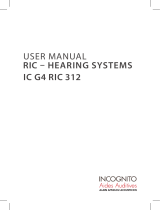 INCOGNITO IC 6 G4 RIC 312 User manual
INCOGNITO IC 6 G4 RIC 312 User manual
-
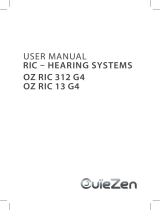 OUIEZEN OZ RIC 312 20 G4 User manual
OUIEZEN OZ RIC 312 20 G4 User manual
-
Impact SP B 50 User guide
-
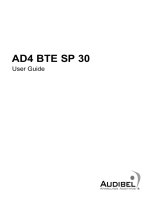 Audibel AD4 BTE SP 30 User guide
Audibel AD4 BTE SP 30 User guide
-
Impact SP B 220 User guide
-
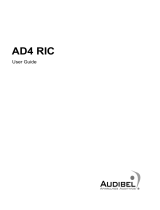 Audibel AD4 RIC 40 User guide
Audibel AD4 RIC 40 User guide
-
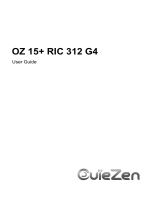 OUIEZEN OZ 15+ RIC 312 G4 User guide
OUIEZEN OZ 15+ RIC 312 G4 User guide
-
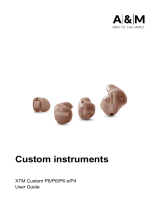 A&M XTM CUSTOM P4 User guide
A&M XTM CUSTOM P4 User guide
-
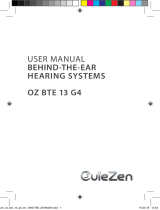 OUIEZEN OZ BTE 13 15 G4 User manual
OUIEZEN OZ BTE 13 15 G4 User manual
-
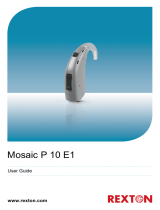 REXTON MOSAIC P 10 E1 User guide
REXTON MOSAIC P 10 E1 User guide

























































